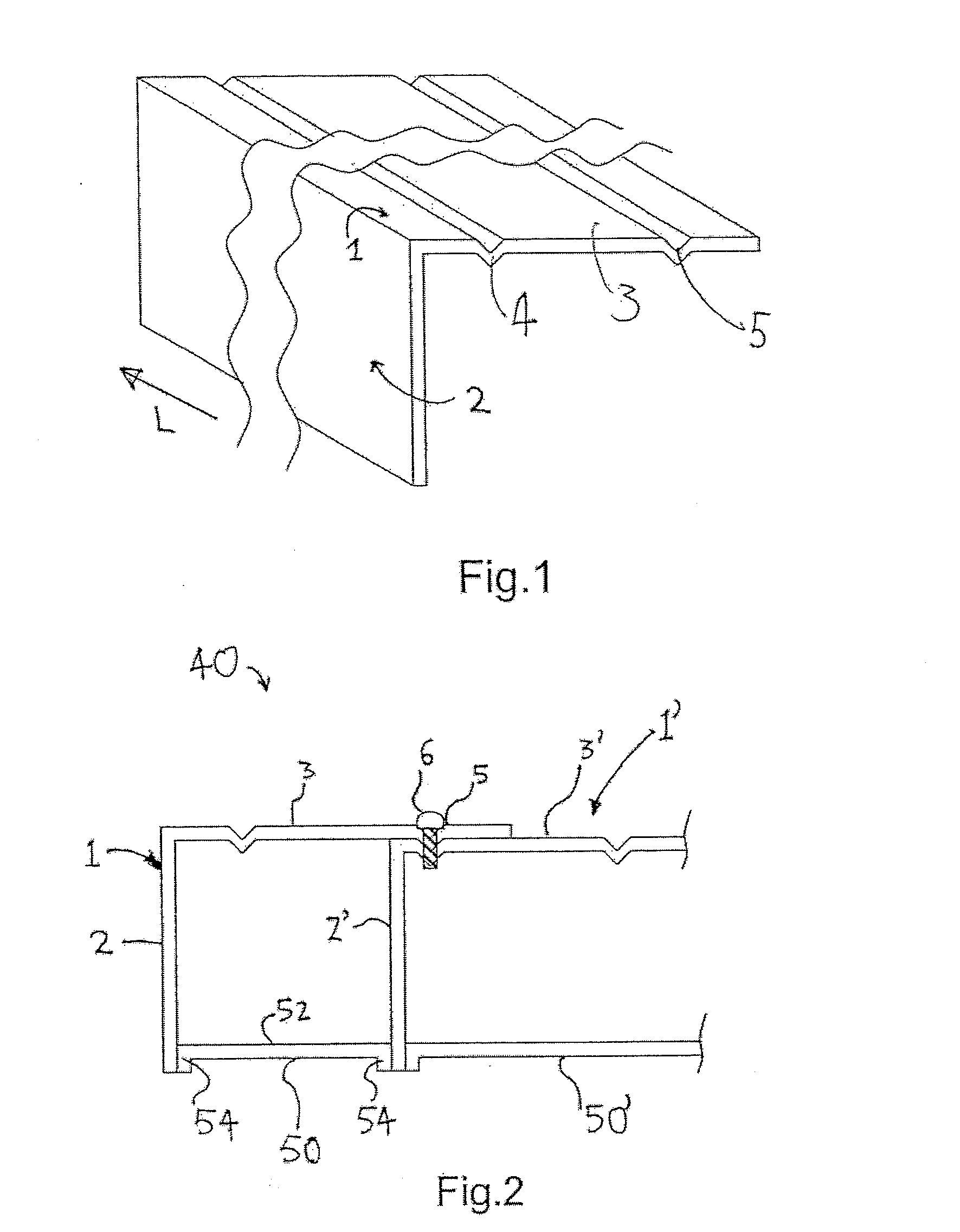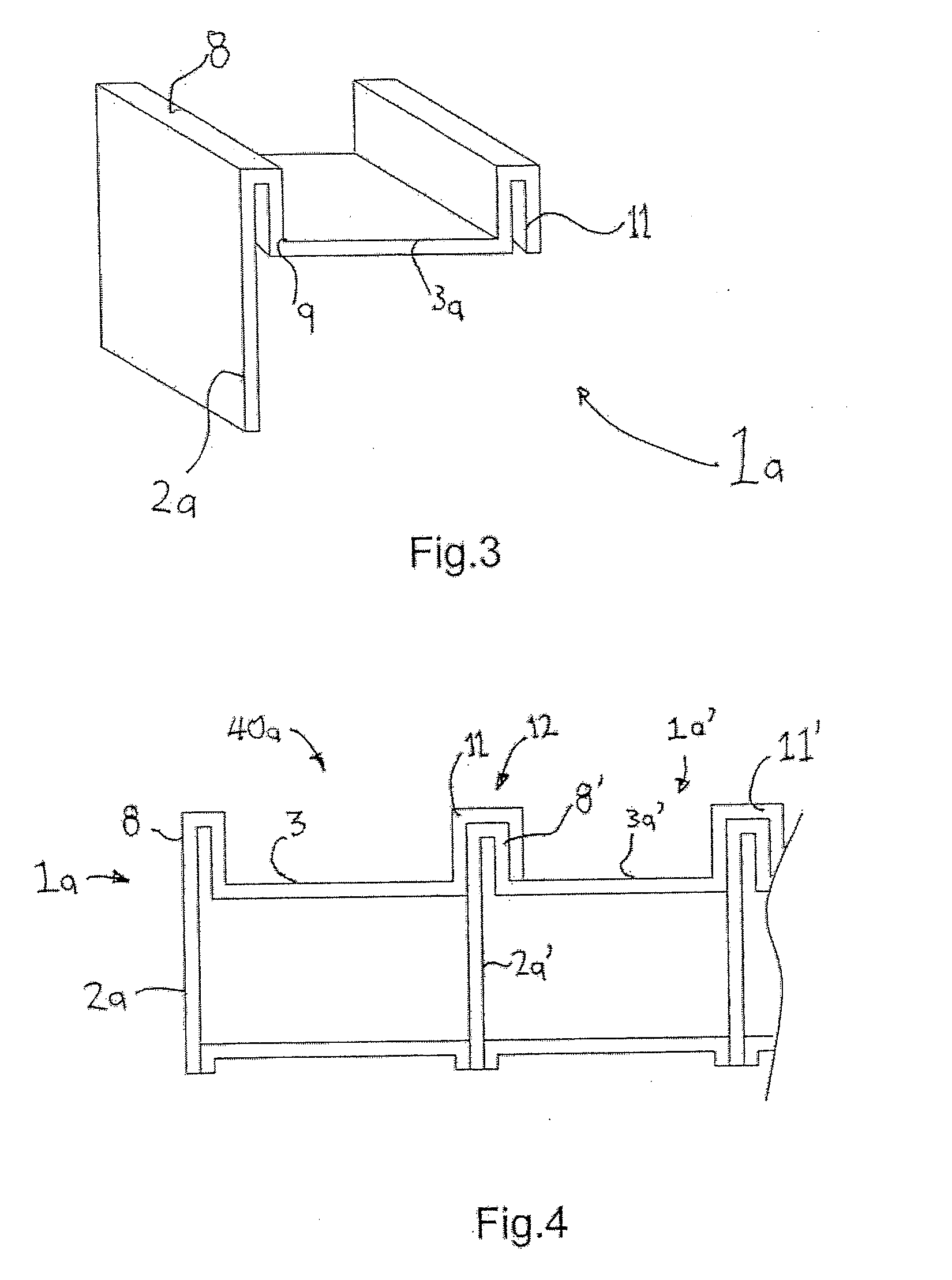Architectural Pavements in Elevated Exterior Deck Applications
a technology of architectural pavements and elevated exterior decks, applied in the direction of treads, structural elements, building components, etc., can solve the problems of requiring substantial time to erect, joist systems, etc., and achieve the effects of reducing the rocking, splitting or cracking of stones or pavers, reducing the risk of slipping, and reducing the risk of falling o
- Summary
- Abstract
- Description
- Claims
- Application Information
AI Technical Summary
Benefits of technology
Problems solved by technology
Method used
Image
Examples
Embodiment Construction
[0046]Referring to FIG. 1, a joist 1 for use in a deck assembly 40 comprises a web portion 2 and a deck portion 3. It will be appreciated that the joists are of indeterminate length L and may be customized to the length required. The deck portion 3 extends outwardly from the web portion 2 and the included angle between the deck portion 3 and web portion 2 is typically 90°, although other angles may be incorporated. The deck portion 3 is provided with a pair of V-shaped recesses 4, 5 at spaced locations that are proximal to and distal from the web portion 2 respectively. The joist 1 is formed from a rolled steel strip of appropriate gauge and the joists 1 may be pre-finished by painting, powder coating or galvanising to inhibit corrosion.
[0047]A plurality of joists 1, 1′ of FIG. 1 are assembled as shown in FIG. 2 to form a deck assembly 40. The web portions 2, 2′ of each joist are aligned vertically in parallel with the deck portions 2, 2′ overlapping. The distal V-shaped recess 5 en...
PUM
 Login to View More
Login to View More Abstract
Description
Claims
Application Information
 Login to View More
Login to View More - R&D
- Intellectual Property
- Life Sciences
- Materials
- Tech Scout
- Unparalleled Data Quality
- Higher Quality Content
- 60% Fewer Hallucinations
Browse by: Latest US Patents, China's latest patents, Technical Efficacy Thesaurus, Application Domain, Technology Topic, Popular Technical Reports.
© 2025 PatSnap. All rights reserved.Legal|Privacy policy|Modern Slavery Act Transparency Statement|Sitemap|About US| Contact US: help@patsnap.com



